Indoor Strawberry Growing: Imagine plucking a perfectly ripe, juicy strawberry right from your own home, even in the dead of winter! Sounds like a dream, right? Well, it doesn’t have to be! For centuries, humans have cultivated strawberries, with evidence suggesting their consumption dating back to ancient Rome. But bringing that sweet taste indoors? That’s where the real magic happens, and I’m here to show you how.
In today’s busy world, finding time to connect with nature can be a challenge. But with these simple DIY tricks, you can bring a little bit of the garden inside and enjoy fresh, delicious strawberries year-round. Not only will you have access to a healthy snack, but you’ll also experience the joy of nurturing a living thing and watching it thrive. Plus, think of the bragging rights when you offer your friends a homegrown strawberry in the middle of December!
This article is packed with easy-to-follow tips and tricks for successful indoor strawberry growing, regardless of your experience level. We’ll cover everything from choosing the right varieties to providing the perfect lighting and nutrients. So, grab your gardening gloves (or don’t, it’s indoors after all!), and let’s get started on this exciting journey to fresh, homegrown strawberries!
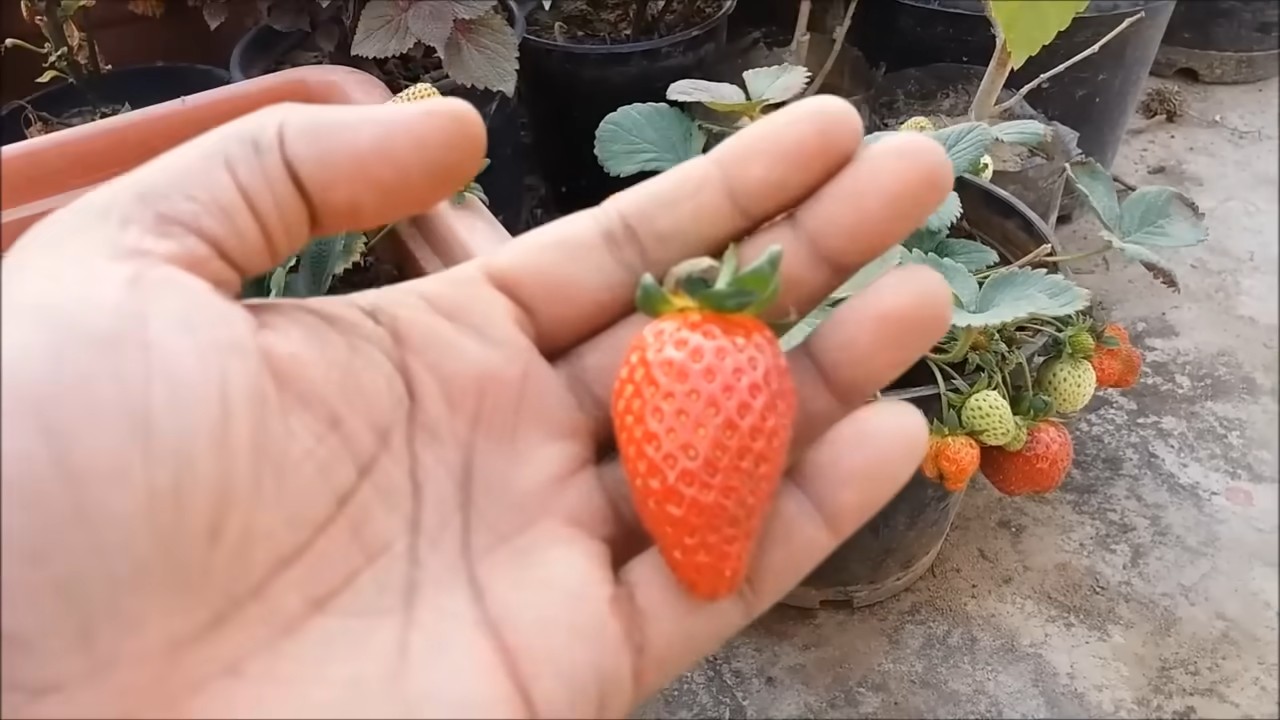
Grow Your Own Delicious Strawberries Indoors!
Hey there, fellow plant enthusiasts! Ever dreamed of picking fresh, juicy strawberries right from your kitchen? Well, dream no more! I’m going to walk you through a super fun and rewarding DIY project: growing strawberries indoors. It’s easier than you think, and the taste of homegrown berries is absolutely unbeatable.
What You’ll Need
Before we dive in, let’s gather our supplies. This is crucial for a smooth and successful strawberry-growing adventure.
* Strawberry Plants: You have a few options here. You can start with bare-root strawberry plants (dormant plants), established strawberry plants from a nursery, or even strawberry seeds (though seeds take longer and require more patience). I personally recommend starting with established plants for quicker results. Everbearing or day-neutral varieties are best for indoor growing as they produce fruit throughout the season, unlike June-bearing varieties.
* Containers: Choose pots that are at least 6-8 inches in diameter. Good drainage is essential, so make sure your pots have drainage holes. Hanging baskets are also a fantastic option, especially if you’re short on space.
* Potting Mix: Don’t use garden soil! It’s too heavy and doesn’t drain well. Opt for a high-quality potting mix specifically formulated for containers. A mix containing peat moss, perlite, and vermiculite is ideal.
* Grow Lights: Strawberries need plenty of light to thrive. If you don’t have a sunny windowsill that gets at least 6-8 hours of direct sunlight, you’ll need to invest in grow lights. LED grow lights are energy-efficient and work wonders.
* Fertilizer: A balanced liquid fertilizer (like 10-10-10) is essential for feeding your strawberry plants.
* Watering Can or Spray Bottle: For gentle watering.
* Small Gardening Tools: A trowel for planting and small scissors for trimming runners.
* Optional: Strawberry supports or cages to keep the berries off the soil.
Planting Your Strawberries
Now for the fun part! Let’s get those strawberry plants settled into their new homes.
1. Prepare Your Pots: Fill your chosen containers with the potting mix, leaving about an inch of space at the top.
2. Planting Bare-Root Strawberries: If you’re using bare-root plants, soak the roots in water for about an hour before planting. Dig a small hole in the center of the pot, large enough to accommodate the roots. Gently spread the roots out and place the plant in the hole, making sure the crown (the point where the roots meet the stem) is just above the soil line. Cover the roots with potting mix and gently firm the soil around the plant.
3. Planting Established Strawberries: If you’re using established plants from a nursery, gently remove the plant from its container. Loosen the roots slightly with your fingers. Dig a hole in the center of the pot, large enough to accommodate the root ball. Place the plant in the hole, making sure the top of the root ball is level with the soil surface. Cover the roots with potting mix and gently firm the soil around the plant.
4. Water Thoroughly: After planting, water your strawberry plants thoroughly until water drains out of the drainage holes. This helps settle the soil and encourages root growth.
Providing the Right Environment
Strawberries are pretty adaptable, but they do have specific needs to flourish indoors.
1. Light: This is arguably the most important factor. Strawberries need at least 6-8 hours of direct sunlight per day. If you don’t have a sunny windowsill, use grow lights. Position the grow lights about 6-12 inches above the plants. I usually keep my grow lights on a timer for 14-16 hours a day.
2. Temperature: Strawberries prefer temperatures between 60-80掳F (15-27掳C). Avoid placing them near drafts or heating vents.
3. Humidity: Strawberries like moderate humidity. If your indoor air is dry, you can increase humidity by placing a tray of water near the plants or using a humidifier.
4. Air Circulation: Good air circulation helps prevent fungal diseases. Make sure your plants have enough space between them and consider using a small fan to circulate the air.
Watering and Fertilizing
Proper watering and feeding are crucial for healthy growth and abundant fruit production.
1. Watering: Water your strawberry plants when the top inch of soil feels dry to the touch. Avoid overwatering, as this can lead to root rot. Water thoroughly until water drains out of the drainage holes. I usually water every 2-3 days, but this will depend on the temperature and humidity in your home.
2. Fertilizing: Feed your strawberry plants every 2-3 weeks with a balanced liquid fertilizer (like 10-10-10). Follow the instructions on the fertilizer label. I usually dilute the fertilizer to half strength to avoid burning the roots.
Pollination
Since you’re growing strawberries indoors, you’ll need to help them pollinate.
1. Hand Pollination: Use a small, soft paintbrush to gently transfer pollen from one flower to another. Brush the paintbrush inside each flower, collecting pollen, and then brush it onto the stigma (the center part of the flower) of another flower. Repeat this process every few days, especially when the plants are flowering.
2. Fan Pollination: You can also use a small fan to gently blow air around the plants, which helps to distribute the pollen.
Dealing with Runners
Strawberry plants produce runners, which are long stems that grow out from the main plant and develop new plantlets at the end.
1. Trimming Runners: If you want your plants to focus on producing fruit, trim off the runners as they appear. Use small scissors to cut the runners close to the main plant.
2. Propagating New Plants: If you want to propagate new strawberry plants, you can allow the runners to root in small pots filled with potting mix. Once the plantlets have developed roots, you can cut them from the main plant and transplant them into their own pots.
Harvesting Your Strawberries
The moment you’ve been waiting for!
1. Harvesting: Strawberries are ready to harvest when they are fully red and slightly soft to the touch. Gently twist the berry off the plant, leaving a small piece of the stem attached.
2. Enjoying Your Harvest: Eat your strawberries fresh, use them in desserts, or freeze them for later. The possibilities are endless!
Troubleshooting
Even with the best care, you might encounter some problems along the way. Here are a few common issues and how to address them:
* Yellowing Leaves: This could be a sign of overwatering, underwatering, or nutrient deficiency. Check the soil moisture and adjust your watering accordingly. If the problem persists, try fertilizing your plants.
* Lack of Fruit: This could be due to insufficient light, poor pollination, or nutrient deficiency. Make sure your plants are getting enough light and that you’re hand-pollinating them regularly. Fertilize your plants every 2-3 weeks.
* Pests: Aphids and spider mites are common pests that can attack strawberry plants. Inspect your plants regularly and treat any infestations with insecticidal soap or neem oil.
* Fungal Diseases: Powdery mildew and gray mold are common fungal diseases that can affect strawberry plants. Ensure good air circulation and avoid overwatering. Treat any infections with a fungicide.
Extra Tips for Success
* Rotate Your Plants: If you’re using grow lights, rotate your plants every few days to ensure that all sides get equal light exposure.
* Clean Your Pots: Before planting, clean your pots thoroughly with soap and water to remove any lingering pathogens.
* Use a Soil Thermometer: A soil thermometer can help you monitor the soil temperature and ensure that it’s within the ideal range for strawberry growth.
* Be Patient: Growing strawberries indoors takes time and patience. Don’t get discouraged if you don’t see results immediately. With proper care, you’ll be rewarded with delicious, homegrown strawberries in no time!
I hope this guide helps you grow your own amazing strawberries indoors. Happy gardening!
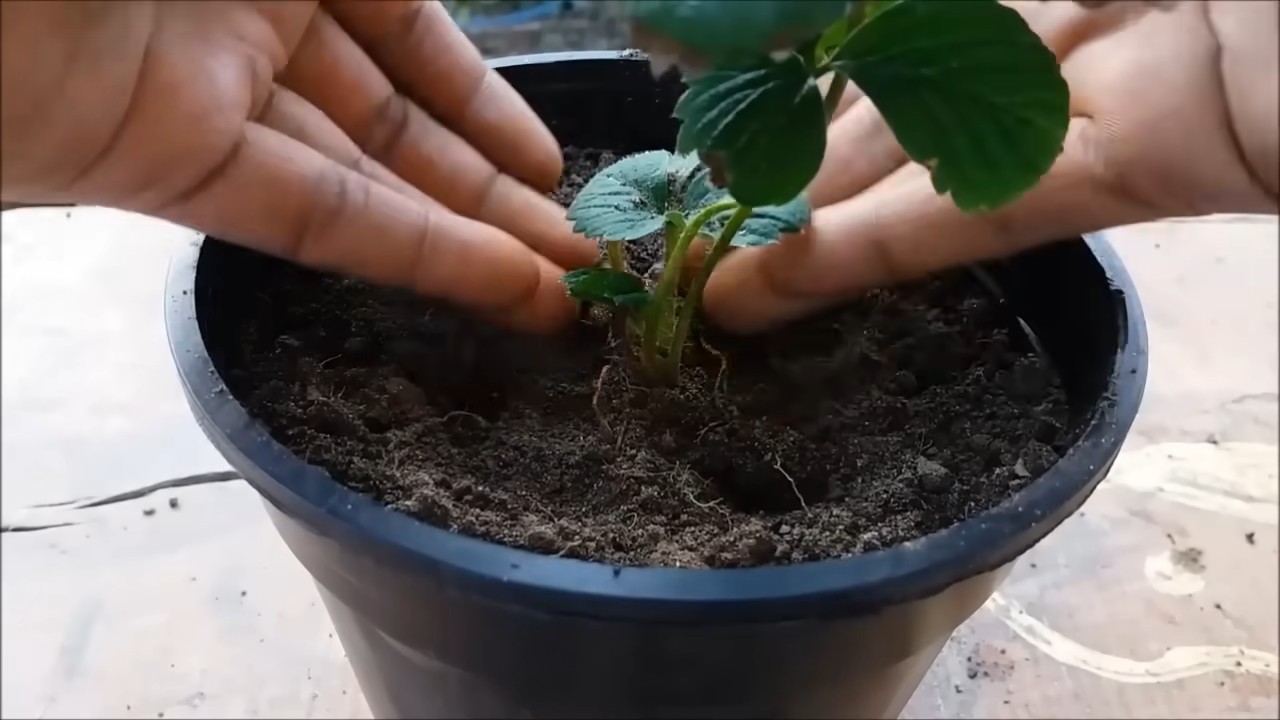
Conclusion
So, there you have it! Embarking on the journey of indoor strawberry growing is not only achievable but also incredibly rewarding. Forget relying solely on grocery store berries that may lack the vibrant flavor and freshness you crave. This DIY approach empowers you to cultivate your own sweet, juicy strawberries right in the comfort of your home, regardless of the season.
This method is a must-try for several compelling reasons. First and foremost, it grants you complete control over the growing environment, minimizing the risk of pests and diseases that can plague outdoor gardens. You’re in charge of the light, the water, and the nutrients, ensuring your strawberry plants receive precisely what they need to thrive. Secondly, it’s a fantastic way to extend the strawberry season, enjoying fresh berries long after the outdoor harvest has ended. Imagine indulging in a strawberry shortcake in the middle of winter, made with berries you nurtured yourself! Finally, it’s an incredibly satisfying and educational experience, connecting you with the natural world and providing a tangible sense of accomplishment.
But the fun doesn’t stop there! Feel free to experiment with different strawberry varieties to discover your personal favorites. Everbearing varieties are particularly well-suited for indoor growing, as they produce multiple harvests throughout the year. Consider trying Albion, Seascape, or Ozark Beauty for a continuous supply of delicious berries. You can also explore different growing mediums, such as coco coir or perlite, to find what works best for your setup. Don’t be afraid to get creative with your container choices, either. Hanging baskets, stacked planters, or even repurposed containers can add a touch of personality to your indoor strawberry garden.
For those looking to maximize their yield, consider supplementing natural light with grow lights, especially during the darker months. A simple LED grow light can make a significant difference in the size and sweetness of your strawberries. And remember, consistent watering and fertilization are key to success. Monitor the moisture levels in your growing medium regularly and provide a balanced fertilizer formulated for strawberries.
We wholeheartedly encourage you to give this DIY indoor strawberry growing trick a try. It’s a simple, cost-effective, and incredibly rewarding way to enjoy fresh, delicious strawberries year-round. We’re confident that you’ll be amazed by the results.
Once you’ve harvested your first batch of homegrown strawberries, we’d love to hear about your experience! Share your photos, tips, and tricks in the comments below. Let’s build a community of indoor strawberry growers and inspire others to embark on this delightful journey. What variety did you choose? What challenges did you face, and how did you overcome them? Your insights could be invaluable to fellow gardeners. Happy growing!
Frequently Asked Questions (FAQ)
What are the best strawberry varieties for indoor growing?
Everbearing varieties are generally recommended for indoor growing because they produce multiple harvests throughout the year. Some popular choices include Albion, Seascape, Ozark Beauty, and Tristar. Day-neutral varieties are also a good option, as their flowering is not affected by day length. Ultimately, the best variety for you will depend on your personal preferences and the specific growing conditions in your home. Consider factors such as flavor, size, and disease resistance when making your selection.
How much light do indoor strawberry plants need?
Strawberry plants need at least 6-8 hours of direct sunlight per day to thrive. If you don’t have a sunny window, you’ll need to supplement with grow lights. LED grow lights are a great option because they are energy-efficient and provide the full spectrum of light that plants need. Position the grow lights about 6-12 inches above the plants and adjust as needed to prevent burning. Watch for signs of insufficient light, such as leggy growth or pale leaves.
What type of soil is best for indoor strawberry plants?
Strawberry plants prefer well-draining soil that is rich in organic matter. A good potting mix for strawberries should contain a blend of peat moss, perlite, and vermiculite. You can also add compost or other organic amendments to improve drainage and fertility. Avoid using garden soil, as it can be too heavy and may contain pests or diseases. Coco coir is another excellent option, as it provides good drainage and aeration.
How often should I water my indoor strawberry plants?
Water your strawberry plants when the top inch of soil feels dry to the touch. Avoid overwatering, as this can lead to root rot. Water thoroughly until the water drains out of the bottom of the pot. The frequency of watering will depend on factors such as the size of the pot, the type of soil, and the temperature and humidity in your home. Check the soil moisture regularly and adjust your watering schedule accordingly.
How often should I fertilize my indoor strawberry plants?
Fertilize your strawberry plants every 2-4 weeks with a balanced fertilizer that is specifically formulated for strawberries. Look for a fertilizer that contains nitrogen, phosphorus, and potassium, as well as micronutrients such as iron, manganese, and zinc. Follow the instructions on the fertilizer label carefully to avoid over-fertilizing, which can damage the plants. You can also use organic fertilizers such as compost tea or fish emulsion.
How do I pollinate my indoor strawberry plants?
Strawberry plants are self-pollinating, but they still need help from wind or insects to transfer pollen from the male to the female parts of the flower. Since you’re growing your plants indoors, you’ll need to hand-pollinate them. You can do this by using a small paintbrush or cotton swab to gently brush the pollen from the center of one flower to the center of another. Repeat this process every few days, especially when the plants are in bloom. You can also use a small fan to create air circulation, which can help to distribute the pollen.
How long does it take for indoor strawberry plants to produce fruit?
It typically takes 2-3 months for strawberry plants to produce fruit after planting. The exact time will depend on the variety of strawberry, the growing conditions, and the age of the plant. Everbearing varieties will produce multiple harvests throughout the year, while June-bearing varieties will produce one large harvest in the spring. Be patient and continue to provide your plants with the care they need, and you’ll be rewarded with delicious, homegrown strawberries.
What are some common problems with indoor strawberry plants and how can I fix them?
Some common problems with indoor strawberry plants include pests, diseases, and nutrient deficiencies. Pests such as aphids, spider mites, and whiteflies can be controlled with insecticidal soap or neem oil. Diseases such as powdery mildew and gray mold can be prevented by providing good air circulation and avoiding overwatering. Nutrient deficiencies can be corrected by fertilizing with a balanced fertilizer. Regularly inspect your plants for signs of problems and take action quickly to prevent them from spreading.
Can I grow strawberries indoors from seed?
Yes, you can grow strawberries indoors from seed, but it is a more challenging and time-consuming process than starting with established plants. Strawberry seeds require a period of cold stratification before they will germinate. This means that you need to store the seeds in the refrigerator for several weeks before planting them. Once the seeds have been stratified, you can sow them in a seed-starting mix and keep them moist until they germinate. Be patient, as it can take several weeks for the seeds to sprout.
How do I overwinter my indoor strawberry plants?
If you live in a cold climate, you’ll need to overwinter your indoor strawberry plants. To do this, move the plants to a cool, dark location such as a garage or basement. Water them sparingly, just enough to keep the soil from drying out completely. In the spring, gradually acclimate the plants to warmer temperatures and more sunlight before moving them back outdoors or to a sunnier spot indoors. You may also want to prune the plants back to encourage new growth.

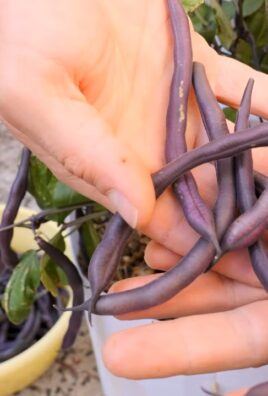
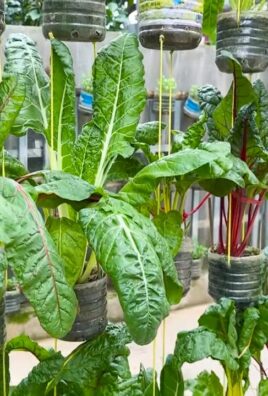
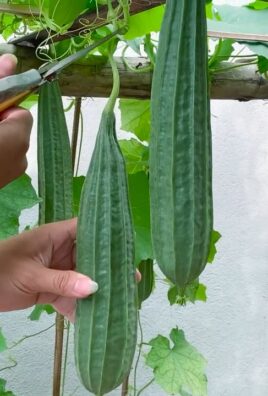
Leave a Comment